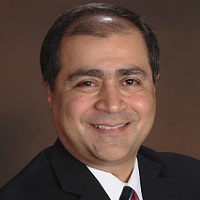 By Peyman Zand, Vice President, CereCore
By Peyman Zand, Vice President, CereCore
Twitter: @CereCore
Few imagined “2020” would end up being used as more of a verb than a noun. From construction to agriculture, entertainment to telecommunications, and education to transportation, 2020 left no industry untouched by its transcendent impact. The year’s events forced all of us to rethink, reshape, reorganize, and retool how we view, react, and respond to what were once our normal routines and standards.
For healthcare CIOs, these shifts in strategic thinking and changes in operational execution were no less metamorphic than in any other industry. We had to become more nimble and streamlined, leaving many healthcare CIOs and executives wondering what to expect in 2021. Now the most important question to ask in health IT might be, “How will the impact of 2020’s rapid transformation set the stage for building sustainable and scalable IT systems in the year ahead?”
I recently had the opportunity to sit down with Jim Tate, host of HealthcareNOW Radio’s podcast: The Tate Chronicles. We discussed how most healthcare CIOs responded to the COVID-19 pandemic’s sudden effect on strategy and forecasted what they can expect in 2021. This article is a summary of our conversation and important insights from the CereCore CIO Cohort.
Healthcare CIOs Cohort Speaks Out
2020 was one of the most transformational years in health IT. The implementation acceleration of new technology to support teleworkers and remote care delivery was unprecedented. Remarkably, what was once considered a technology rollout that encompassed a year or more was rapidly and successfully pared down to about a month, leaving many C-level executives to wonder, “Can we accomplish this new normal with other health IT systems?”
CIOs also became focused on ascertaining what implementation lessons were missed or not addressed, which may deter longer-term governance and integration goals. The decline of elective surgeries as a natural casualty of the COVID-19 pandemic created even more pressure on CIOs to bridge the cash flow gap with new IT-driven operational efficiencies and a consumer-centric view of patients’ future needs.
Analytics, AI, and Aggregation Create a New Normal
Traditional, retrospective analytics has been quickly supplemented by prospective analytics to proactively predict what patients need and drive sustained involvement in their own care. Patient engagement programs now neatly fit into the existing paradigm of value-based care models. 2021 will see a marked increase in the use of AI technology tools to fill this need, especially since costs to develop and implement these tools are gradually decreasing.
Healthcare CIOs are rapidly adopting applications similar to Google maps—leveraging multiple data sources and the aggregation of that data to enable more effective care delivery decisions for widespread patient populations. These geospatial and bio-surveillance technologies advance the industry’s interoperability priority and focus, helping to connect more disparate data sources into one source of truth and advancing the quality of value-based care.
If you can imagine this new normal from a healthcare CIO’s point of view, you begin to connect the dots. Health IT advancements will undoubtedly introduce new technology players and competitors in the Enterprise Resource Planning (ERP) and EHR solution space.
Five Strategies for Extraordinary Health IT Transformation
Healthcare CIO priorities are certain to shift in 2021 based on 2020 lessons learned and new health IT companies entering the market. Furthermore, consumer giants such as Walmart, Amazon, CVS, and Walgreens will continue to introduce lower-cost care models and more convenient location-based care delivery methods in the year ahead. What does this evolution mean for the modern healthcare CIO? For starters, they must quickly change their mindsets and establish new strategic goals:
- Determine efficient and effective methods to accelerate the health IT trajectory to cope with pandemic and market-driven changes.
- Expect additional disruptions that jeopardize the effectiveness of legacy systems and applications that are not designed to keep pace with new demands. Telehealth was just the tip of the iceberg.
- Continue to support a remote workforce including new tools to measure worker performance. About 80% of CIOs I spoke with expect remote worker productivity and effectiveness to improve or remain constant moving forward.
- Analyze and optimize internal resources for improved cost and support provisioning.
- Balance existing major projects with new initiatives by rationalizing application and infrastructure environments.
The Health IT New World Order
Healthcare CIOs have been thrust into a radical new world order. It is one that mandates a renewed sense of urgency to move parallel with the industry and at breakneck speed. To survive, healthcare CIOs must be able to rapidly adopt new technologies, implement operational transformations below cost and at scale, and discover innovative ways to maintain a competitive advantages as new players enter the market.
My thanks to Jim for hosting me on his podcast. I enjoyed sharing my thoughts on 2020 and forecasting what we can expect in 2021. Buckle up my friends and colleagues, the year ahead is not well suited for the faint of heart.
